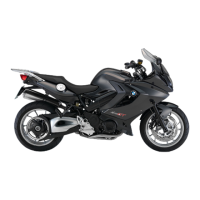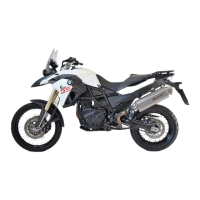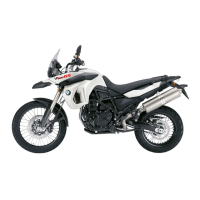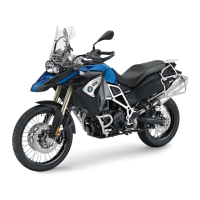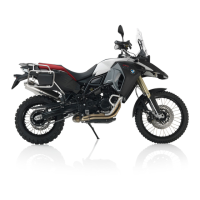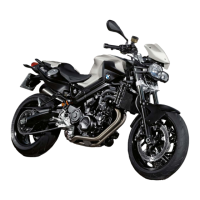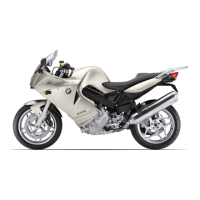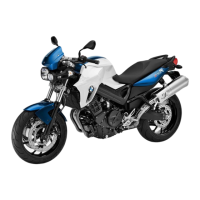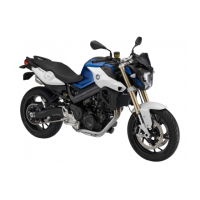Do you have a question about the BMW F 800 GS and is the answer not in the manual?
Explains the meaning and function of various indicator and warning lights.
Covers general warning light functions and their meanings.
Comprehensive guide to all warning indicators and their associated meanings.
Explains how the alarm system can be triggered and the reasons for triggering.
Information on checking and adjusting the brake levers.
Crucial safety guidelines and recommendations for riding the motorcycle.
Step-by-step instructions for starting the motorcycle engine.
Essential information on fuel types, specifications, and the refueling procedure.
Details the pre-ride check routine performed by the instrument cluster.
Explains the self-diagnosis routine for the ABS system.
Explains the self-diagnosis routine for the ASC system.
Guidance on achieving optimal braking performance and techniques.
Detailed technical explanation of the Antilock Brake System (ABS).
Detailed technical explanation of the Automatic Stability Control (ASC).
A guide to diagnosing and resolving common engine starting problems.
A detailed schedule outlining required maintenance tasks and intervals.
Explains the meaning and function of various indicator and warning lights.
Covers general warning light functions and their meanings.
Comprehensive guide to all warning indicators and their associated meanings.
Explains how the alarm system can be triggered and the reasons for triggering.
Information on checking and adjusting the brake levers.
Crucial safety guidelines and recommendations for riding the motorcycle.
Step-by-step instructions for starting the motorcycle engine.
Essential information on fuel types, specifications, and the refueling procedure.
Details the pre-ride check routine performed by the instrument cluster.
Explains the self-diagnosis routine for the ABS system.
Explains the self-diagnosis routine for the ASC system.
Guidance on achieving optimal braking performance and techniques.
Detailed technical explanation of the Antilock Brake System (ABS).
Detailed technical explanation of the Automatic Stability Control (ASC).
A guide to diagnosing and resolving common engine starting problems.
A detailed schedule outlining required maintenance tasks and intervals.
| Displacement | 798 cc |
|---|---|
| Bore x Stroke | 82 mm x 75.6 mm |
| Power | 85 hp (63 kW) at 7, 500 rpm |
| Fuel System | Electronic fuel injection |
| Front Suspension | Upside-down telescopic fork, Ø 43 mm |
| ABS | Standard |
| Compression Ratio | 12.0:1 |
| Final Drive | Chain |
| Engine Type | Liquid-cooled, 4-stroke, parallel twin |
| Torque | 83 Nm (61 lb-ft) at 5, 750 rpm |
| Transmission | 6-speed |
| Rear Suspension | Cast aluminum dual swing arm |
| Front Brake | Twin disc, 300 mm, 2-piston floating calipers |
| Rear Brake | Single disc, 265 mm, single-piston floating caliper |
| Fuel Capacity | 16 liters |
| Seat Height | 880 mm |
| Wet Weight | 214 kg |
| Dry Weight | 421 lbs (191 kg) |
| Frame | Tubular steel frame |
| Length | 2, 320 mm |
| Width | 945 mm |
| Height | 1, 350 mm |
| Wheelbase | 1, 578 mm |

